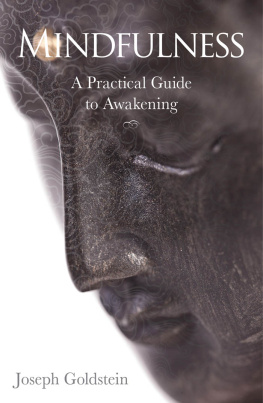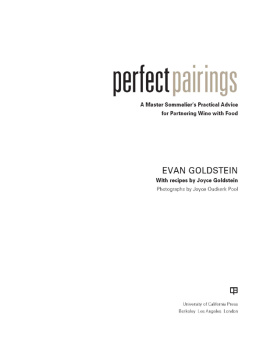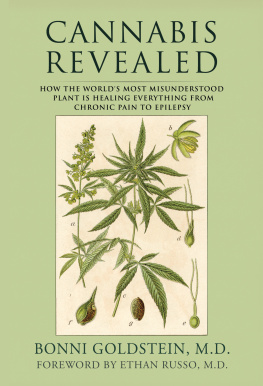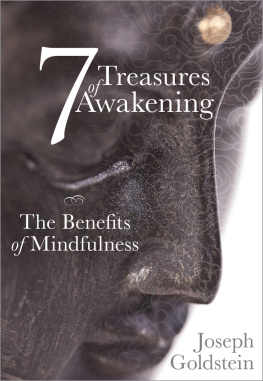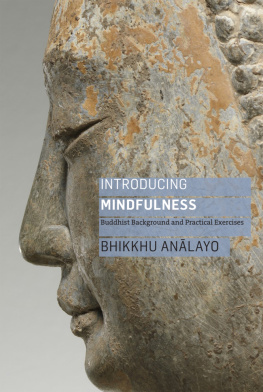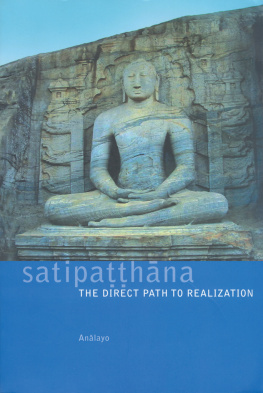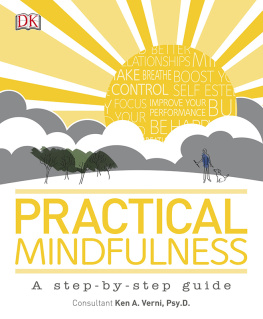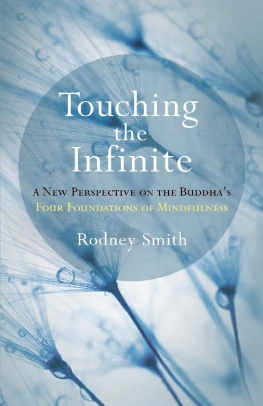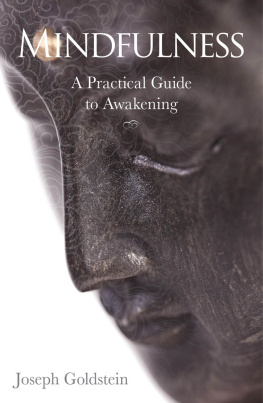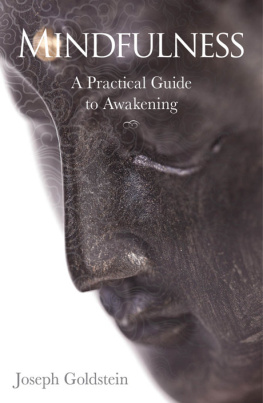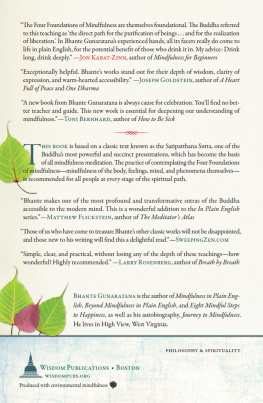
Dedicated to Sayadaw U Paita,
whose mastery of mindfulness and the teachings of the Buddha
has inspired and helped so many people.
Contents
Preface
I FIRST BECAME INTERESTED IN Buddhism and meditation as a Peace Corps volunteer in Thailand. After returning home and trying to continue the practice on my own, I quickly realized that I needed a teacher. This was in 1967, and at that time there were few Buddhist teachers to be found in the West. So I returned to Asia, first stopping in India to look for someone who could guide my practice. I went to Himalayan hill stations, unfortunately in winter when all the Tibetan teachers had gone south. After visiting different ashrams, I ended up in Bodh Gaya, a small village in Northern India, where Siddhartha Gotama became the Buddha, the Awakened One.
Anagrika Munindra, my first teacher, had just returned from nine years in Burma and had begun teaching vipassan, or insight meditation. When I first arrived, he said something so simple and direct that I knew I had come to my spiritual home: If you want to understand your mind, sit down and observe it. As he explained the practice, I resonated with this direct looking at the nature of the mind and body, at how suffering is created and how we can be free.
The simple, although not always easy, practices of vipassan are all rooted in one important discourse of the Buddha: the Satipahna Sutta. Satipahna is often translated as the four foundations of mindfulness, but another, and perhaps more helpful, translation is the four ways of establishing mindfulness. In terms of awareness of the different aspects of our experience, this slight shift of translation has important implications: it gives more emphasis to the process of awareness itself, rather than to the particular objects of our attention.
Although I had read the Satipahna Sutta many times over the years, I was inspired to conduct a line-by-line investigation of its meaning after reading a wonderful volume by Anlayo, Satipahna: The Direct Path to Realization. His clear analysis and deep understanding reawakened my interest in systematically presenting these teachings of the Buddha in their entirety.
Mindfulness: A Practical Guide to Awakening grew out of a series of forty-six lectures I gave at the Forest Refuge, a retreat facility for experienced practitioners at the Insight Meditation Society in Barre, Massachusetts. In the course of these lectures, besides making many references to the original words of the Buddha, I also drew on Anlayos book, teachings from many different Buddhist teachers and traditions, and stories from my own meditation experience. Throughout the lecture series and this current work, my primary emphasis has been on how to put all these teachings into practice as a way of transforming our lives and understanding.
Introduction
MINDFULNESS IS SUCH AN ORDINARY word. It doesnt have the spiritual cachet of words like wisdom or compassion or love, and only in recent times has it entered the lexicon of common usage. Growing up in the fifties, I had never even heard the word. And the sixties, of course, had their own unique vocabulary. But beginning in the seventies and continuing until today, mindfulness is coming into its own. It started with meditation retreats introducing the conceptand the practiceto an ever-increasing number of people. And then, through programs like Mindfulness-Based Stress Reduction; Mindfulness-Based Cognitive Therapy; mindfulness programs in schools, universities, and businesses; and research in state-of-the-art neuroscience labs, the potential inherent in this capacity of the mind to be present, to be aware of whats happening, is gaining widespread credibility and interest.
As just one example, all patients participating in the Duke Integrative Medicine program at Duke University are introduced to the body-mind relationship and the concept of mindfulness. Jeffrey Brantley, MD, founder of the program, said, Mindfulness is at the core of everything we do. We believe that the more mindful people can be as they face health challenges, the healthier they will be.
A few years ago, a friend pioneered a program teaching mindfulness practice to second graders. Here are some of the evaluations from these young practitioners:
Mindfulness helps me get better grades.
Mindfulness helps me calm down when I get upset. It also helps me with sports and to go to sleep at night.
Thank you for teaching mindfulness. Mindfulness changed my life.
Mindfulness really gets me calm.
Mindfulness is the best thing I have done in my life.
I love mindfulness.
Given the great flowering of mindfulness now taking place, it would be helpful to explore its roots. Where did this practice come from? What is the range and depth of its application? How can we understand its great transformative power to awaken us from the dreamlike patterns of our lives? Although this book is an in-depth guide to mindfulness practice and understanding, the range and depth of these teachings may open new possibilities and levels of subtlety for the application of mindfulness in our daily lives. Just as the hard science and engineering of space travel brought many new inventions to the marketplace, so too the depth of the classical understanding that comes from meditation can bring new practices and transformative insights to our lives in the world.
Over a dining-room table, someone once asked me to define mindfulness in just a few words. Phrases like living in the moment or being present give a first intimation of what mindfulness is, but asking, What is mindfulness? is a bit like asking, What is art? or What is love? Fully plumbing the depths of mindfulness requires time and exploration. There is a wealth of meaning and nuance in the experience of mindfulness that can enrich our lives in unimagined ways. This book is an attempt to mine these riches.
In the Satipahna Sutta, the Buddhas discourse on the four ways of establishing mindfulness, there is a broad range of instructions for understanding the mind-body process and different methodologies for freeing the mind from the causes of suffering. We need not attempt to put all of them into practice and certainly not all at the same time. The Buddha himself gave different instructions, depending on the temperaments and inclinations of his listeners. But once we have a simple baseline of practice that both suits our temperaments and inspires us to continue, we can deepen our understanding by expanding the field of our inquiry. At different times, particular instructions in this discourse may touch us and enliven our practice in unexpected ways.
The Buddha introduces this discourse with an amazingly bold and unambiguous statement: This is the direct path for the purification of beings, for the surmounting of sorrow and lamentation, for the disappearance of pain and grief, for the attainment of the true way, for the realization of nibbnanamely the four foundations of mindfulness.
Given the magnitude and import of this declarationthis is the direct path to liberationit will be useful to explore this discourse in detail, using the Buddhas own words to guide and deepen our understanding. And as we look at this sutta, we find that all of the Buddhas teachings are contained within it. With each of these four ways of establishing mindfulness, the Buddha teaches different methods and techniques that liberate the mind. By the end of the discourse, he has laid out this most amazing and complete path to awakening. Different traditions of vipassan might emphasize one or another of these exercises, but any one of them is sufficient to bring us to the end of the path. When we open any one door of the Dharma, it leads to all the rest.
Next page
